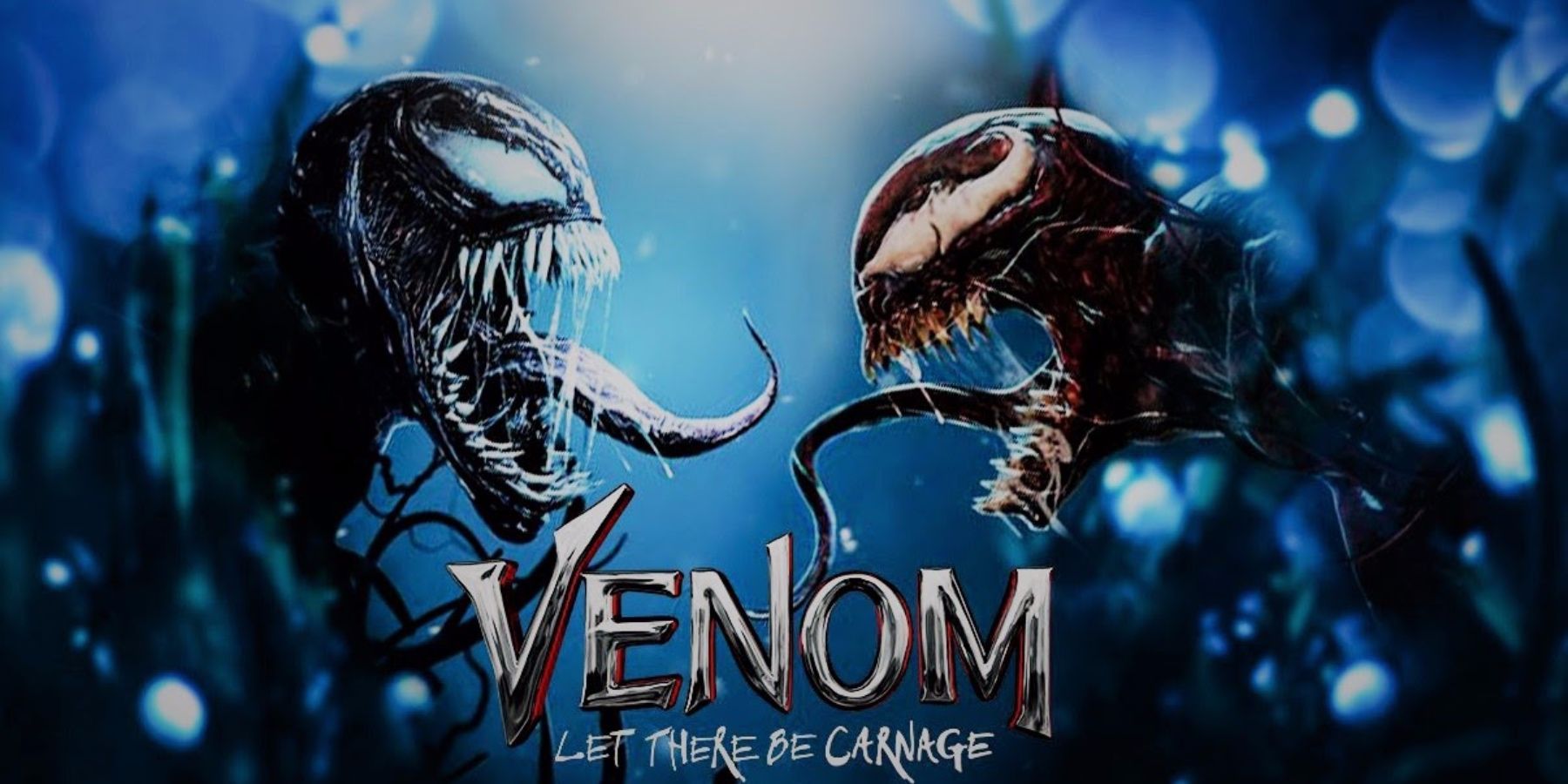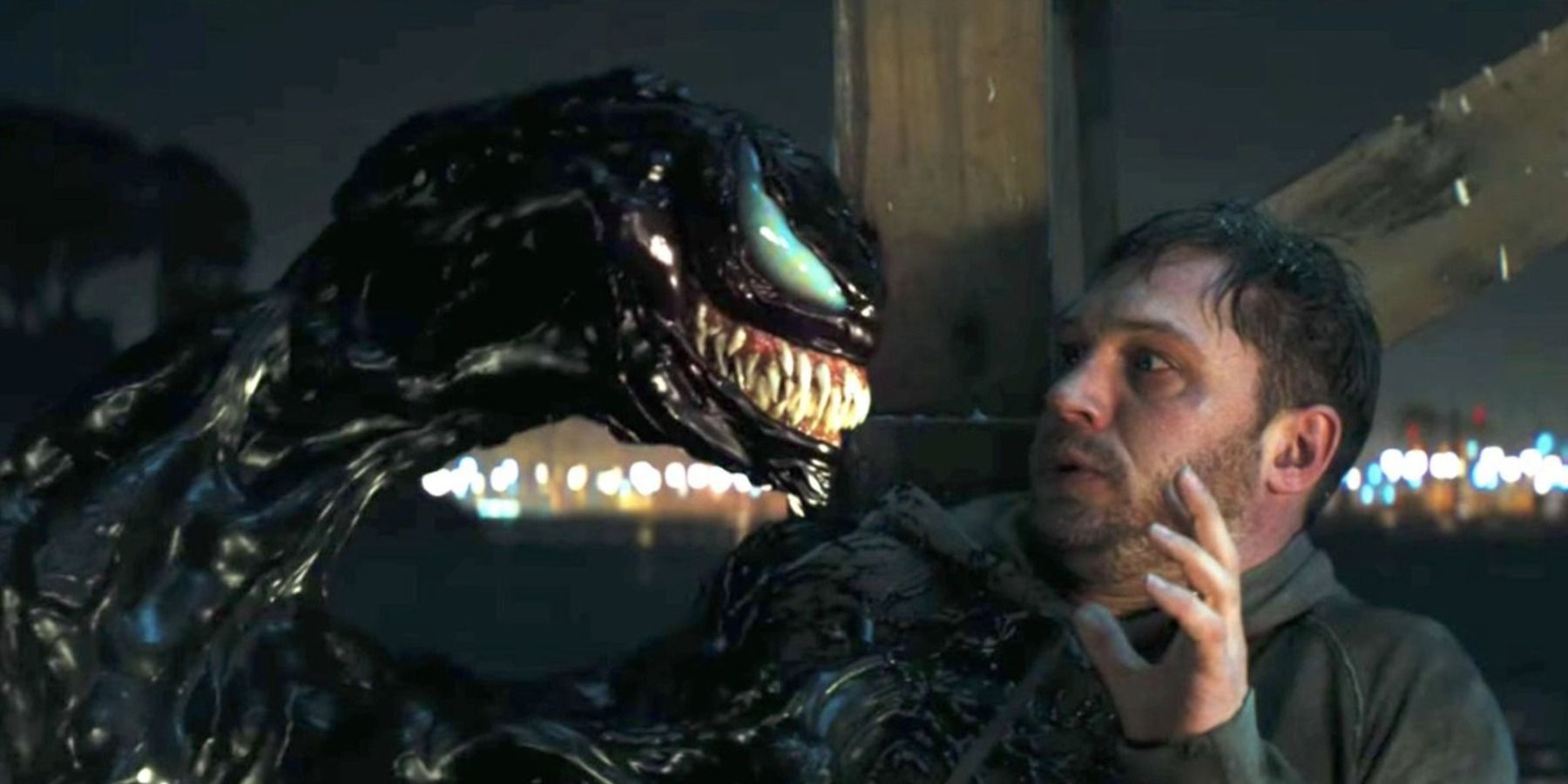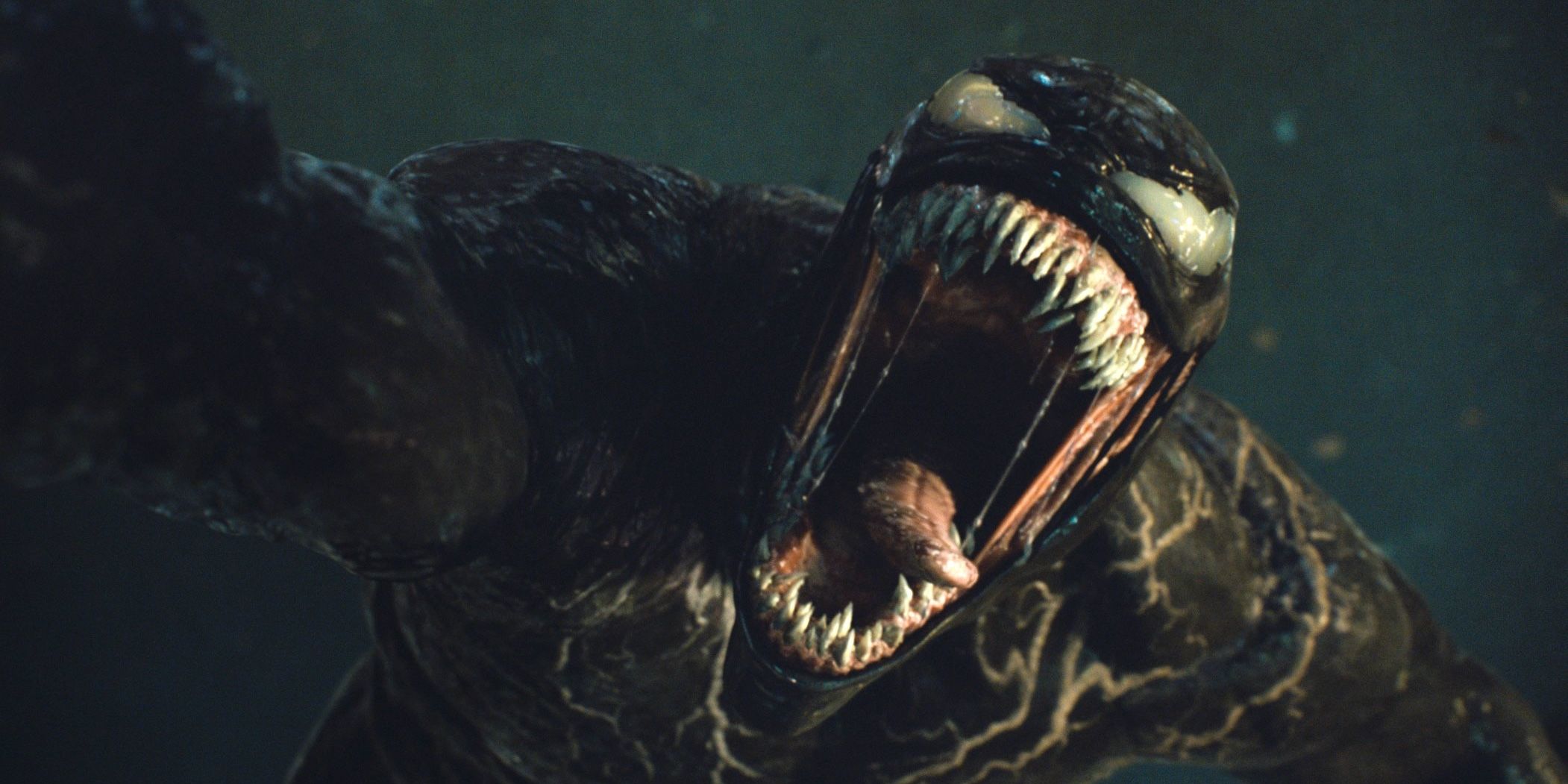Since the Marvel Cinematic Universe claimed its throne at the top of pop culture, the question on comics fans' minds has been how characters outside the franchise could make their way back in. The big mid-credit twist of Venom: Let There Be Carnage may have offered up an answer and set a path for other properties to join the MCU.
After all the fun of the hotly anticipated sequel to Venom, and all the hype surrounding the first onscreen appearance of Carnage, all people can talk about is that mid-credits tease. There has been non-stop conjecture about the character reentering the Spider-Man narratives from which he spawned.
Venom: Let There Be Carnage concludes with a rush of information, which, in just a couple of lines of dialogue, changes everything for the series. In short order, Venom reveals to his host Eddie Brock that his species is interconnected through a hive mind which spans not only the entire galaxy but the multiverse as a whole. This gives the symbiote knowledge of realities beyond his own, and upon sharing this information, Eddie asks for a taste of this network of intelligence. Subsequently, a wave of reality-warping light accosts the pair, surprising both of them and transporting them to a new world. A TV in the room plays the J. Jonah Jameson broadcast from the end of Spider-Man: Far From Home, and Venom becomes agitated at the series first appearance of Peter Parker. In one brief scene, this moment reveals the films' place in the multiverse, Venom's previous relationship to Spider-Man, and teases the possibility of the character now entering the MCU. Much is still left unanswered, but this brief scene could be the road paved that brings other Marvel staples back to the MCU.
Marvel gave up the film rights to a number of their most beloved characters to stave off bankruptcy back in the challenging time of the '90s. Though they maintained or reclaimed most of them, there are still some huge fixtures of the comic book empire that the MCU has yet to insert. After the 21st Century Fox merger, popular characters like the Fantastic Four and the X-Men can join the most profitable film franchise in history. There are a number of ways this could be accomplished, but the strategy apparently embraced by the Venom franchise is one that could be modified for a variety of Marvel stories and characters.
The two main strategies when it comes to merging characters owned by other companies into the MCU are best understood through casting. The Venom method takes a character, in this case owned by Sony, and merges their existing film series into the MCU diegetically. The alternative would be to recast and recontextualize the newfound additions and introduce them anew within their new universe. One obvious determining factor between the two options is the quality of their existing film series. It should come as no shock that the Fantastic four will not be bringing the baggage of their previous film appearances. On the other hand, film series like the 20th Century Fox produced X-Men franchise could be popular enough to warrant keeping their cast and continuity around.
When reincorporating these previously lost characters, Marvel has the choice to allow their existing narrative to comingle with the MCU's, or to allow it to exist separately. Either option carries upsides and downsides. Keeping the old continuity keeps fans of that universe happy, but runs the risk of stagnating with the inclusion of characters that have been done before. Ditching the old continuity and forging a new one maintains originality and jettisons anything less well-liked, but will inherently alienate long-time fans. Venom: Let There Be Carnage, while very light on detail, provides a clear example of how franchises deemed worthy of integration might be introduced in the future.
Perhaps the most interesting subject for inclusion into the MCU is the X-Men universe. Though characters typically considered part of that universe have made their way in, the concepts of mutants or Xavier's School for Gifted Youngsters have still been exclusive to the Fox films. While it could certainly be exciting for a big 3rd act twist or mid-scene reveal to interlink universes, most fans would prefer that kind of continuity management stay on the sidelines of the narrative. Venom 2 proved that a mid-credits scene still delivers that all-important pop of hype to an audience while allowing the film's narrative to play out unbothered by those details.
Despite its clear effectiveness, there are downsides to this method of merging film universes. Most prominently, the discussion of the big reveal completely drowned out discussion of the actual film. The MCU is such a big cultural force that announcing involvement with it can completely overshadow the merits of a singular film. This effect is likely to occur regardless of the film, if the first onscreen appearance of Carnage couldn't fix it, one wonders what could. But, even if conversations gravitate towards one aspect of a piece, at least people are talking.
Venom: Let There Be Carnage may have created a format that could be used by a variety of Marvel properties as they march back to the MCU. This issue will keep fans on pins and needles until every Marvel character hits the MCU.



